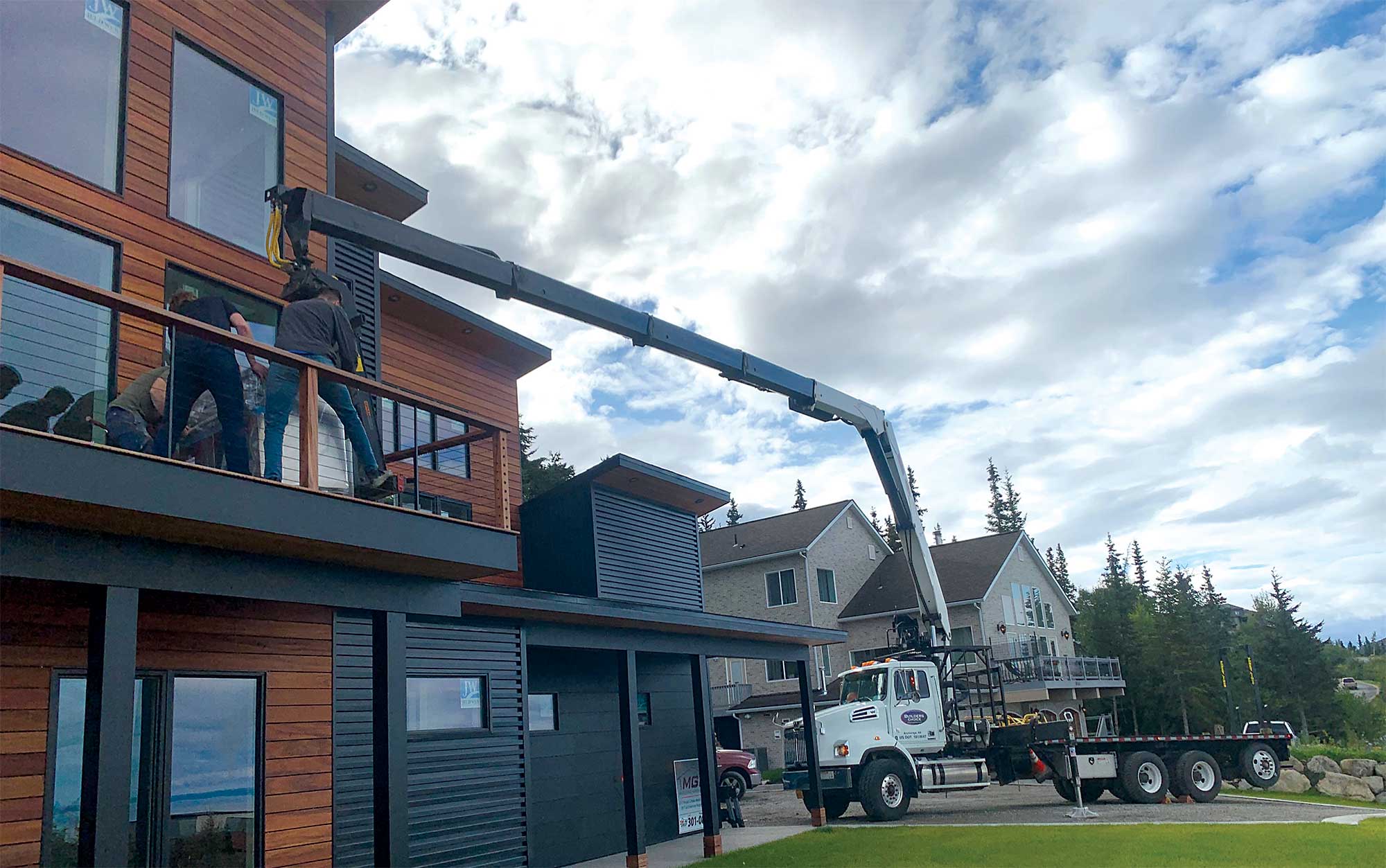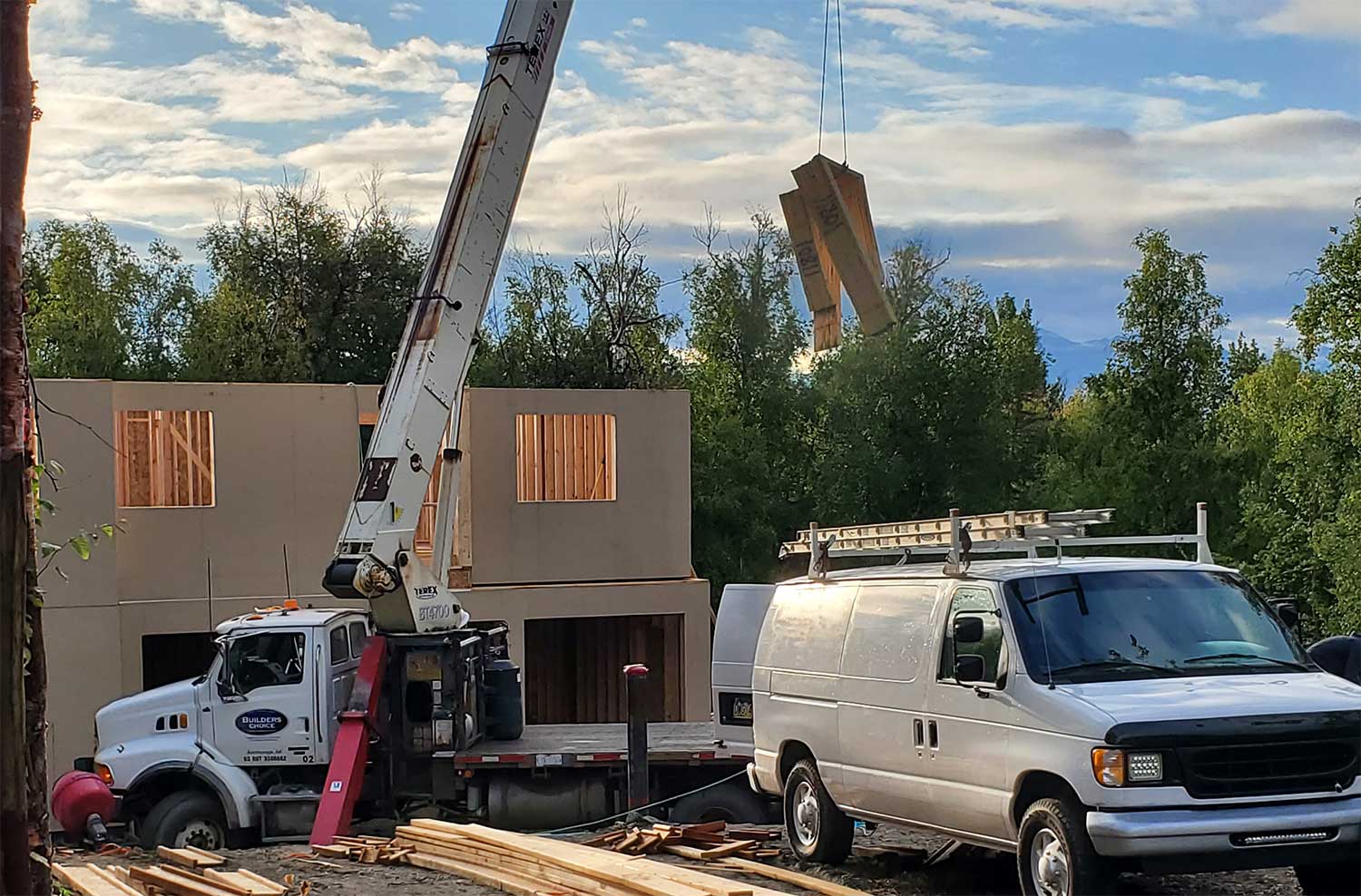Photo courtesy of Builders Choice Lumber, LLC

Photo courtesy of Builders Choice Lumber, LLC
he 2021 pre-construction season started out normally for Chris Reilly, project manager and vice president of Rain Proof Roofing. After surviving an unpredictable pandemic year filled with health mandates, manufacturer closures, and unusual weather patterns, he and his staff began the usual process of ordering materials in the winter so they would arrive at the start of construction season in spring.
Reilly had already noticed a price fluctuation in several categories of raw materials. However, it wasn’t until May when the real surprise hit—several suppliers told him it might take up to three months to fill his orders.
“At the start of COVID, many manufacturing plants shut down and reduced inventory, not thinking about the demand once things opened back up,” says Reilly. “It was the perfect storm.”
Early warnings of shortages for common construction items such as lumber, steel, copper wire, and lighting supplies appeared as early as February of this year. However, Reilly says odd items like long screws (six to eighteen inches) have “suddenly fallen off the map.” Extreme winter storms in the south halted production of polyurethane adhesives as manufacturers dealt with damaged and lost supplies. Added to this is an increasing labor shortage that has reduced what construction companies can accomplish during the summer construction season.
“We are definitely living in unprecedented times,” says Pak, who likens the price fluctuations in raw materials to the changes in the stock market. “But the price is only one aspect of the current situation. The lead time for certain categories of building materials is two to three months versus the usual two to three days.”

Photo courtesy of Builders Choice Lumber, LLC
“Eventually, it just reaches a point where companies can’t absorb the cost,” says Reilly. “Even if they see revenue, they aren’t making much money.”
The bigger question in Pak’s mind is how the overall housing market will be affected in terms of the number of housing startups, residential, multi-family units, and commercial properties built once supply and demand settle down.
With a high volume of calls for eight weeks straight, Chapman says he could easily foresee a car rental shortage on the horizon.
As the only car rental company in Alaska that offers a rental guarantee, every Alaska Auto Rental customer is matched with a vehicle upon reservation, which is a different approach from national chains that overbook, counting on a percentage of reservations to fall through so that the number of available vehicles is similar to the number of people that actually show up to pick them up. Though the unusually high call volume required Alaska Auto Rental to adjust its communication strategy, Chapman felt confident he could meet demand by supplementing its existing rental fleet with 100 new vehicles he had ordered earlier in the year. And then—with almost zero warning—the manufacturer informed Chapman his vehicles weren’t coming.
“They hadn’t even been built!” says Chapman.
Despite this setback, Chapman was determined to fulfill the commitment made to each and every client. He visited every nearby car lot and private sale listing and browsed online marketplaces to purchase functional vehicles that met required safety standards. He says he ended up with one of the most diverse rental fleets he has ever seen, and in many cases, his customers drove away in nicer cars than they originally reserved. When he didn’t have vehicles for potential customers, he worked with his competitors to find available rentals elsewhere in the area.
Photo courtesy of Alaska Auto Rental

Like Rain Proof Roofing, Chapman says Alaska Auto Rental is dealing with a labor shortage that seems pervasive across all industries. The cause of the labor shortage is multi-faceted. Chapman points to an increase in position openings, especially in the hospitality industry that relied on J-1 visa workers until the pandemic suspended the program. J-1 visa workers are typically foreign workers who apply to work for a period of time in the United States to learn more about US business practices and gain exposure to US culture.
Neither Alaska Auto Rental nor Rain Proof Roofing relies on J-1 visa workers. However, Chapman says more job openings and fewer workers create a supply and demand issue similar to what contractors are experiencing with the cost and allocation of building materials.